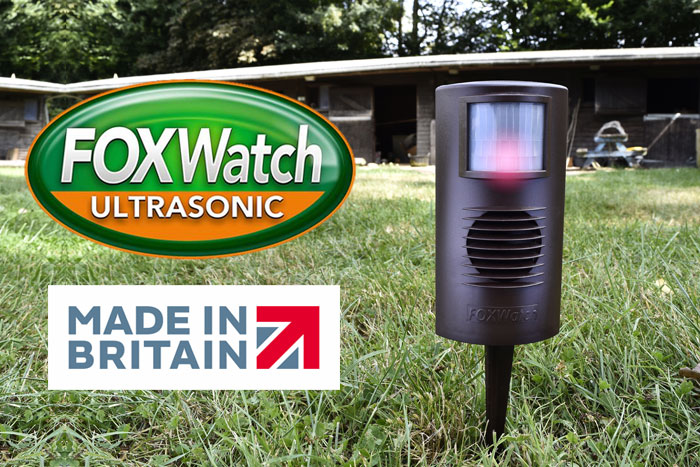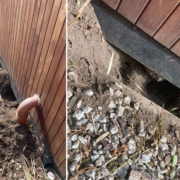Where does the fox get into your garden?
Are you tired of constantly dealing with foxes causing a nuisance in your garden? Do you want to put an end to the digging, pooing, and other problems they create? If so, then you’re in the right place, as finding their entrance point will put you on the path to success.
In this article, you’ll learn how to identify where foxes are getting into your garden and provide you with practical tips on how to deter them. With a little bit of effort, you can make your garden an unwelcoming place for these furry intruders and finally enjoy the peace and quiet you deserve.
Why is the entry point important?
If a fox is making unwanted visits into your garden, then the most important first step you can take in order to stop it is to find the exact spot where it gets in.
When a fox reaches the entry point to your garden, it will make a split-second decision about whether it’s safe to proceed or not.
If the fox detects nothing unusual as it approaches your garden, it will have absolutely no cause for concern and will enter as normal.
In your particular case, the fox has probably got into the habit of coming into your garden completely unchallenged and will continue to do so unless you give it a reason to think otherwise.
The entry point to your garden is where you have the best chance of forcing a fox to make the decision to stay away. Or, at the very least, make it very wary about entering and minimising the time it spends there.
Therefore, it’s highly important that you locate how the fox gains access to your garden, as doing this will help you to reduce its nuisance behaviour.
How to find the entry point
Foxes are risk-averse, creatures of habit that don’t like change. Much of an urban fox’s daily routine will include trotting around its territory scent-marking (spraying and pooing) and generally making sure everything is in order.
The good thing about this predictability is, once you’ve worked out how a fox gets in and out of your garden, you can be pretty certain that’s the way it always does it.
If you’re not entirely sure where the fox comes in, then below are the most common ways that foxes get into gardens. Have a look around your garden and try and make an educated guess.
- Over / under / along a wall or fence
- Through a gate
- Through hedges, shrubbery or thick undergrowth
- Via a neighbour’s garden
- Across a flat roof
- From behind a shed or other garden structure
- Up a side passage
Tell-tale signs are scratch marks on the top of fence posts, landing marks or paw prints on the ground at the base of walls or fences, or slightly obscured tunnels under fences.
You might also see discoloured grease marks between two railings on an iron gate caused by a fox using that point to squeeze through time after time.
Small tufts of red hair snagged on a fence, wall or shrubbery may also show where a fox is coming in.
If you (or your dog) have ever chased a fox out of your garden, then try and remember where it got out. In all likelihood, that’s the place it got in as well.
If you really have no idea, then it would be worth installing a motion-activated wildlife camera [aff] to capture footage of the fox each time it comes in. Wildlife cameras are a fun way to work out where a fox makes it entrance and will often reveal other visitors like cats, badgers and hedgehogs, some of which you may not have previously been aware of.
Use a fox deterrent at the entry point
As mentioned earlier, the fox has probably seen your garden as a safe haven and has been used to coming and going as it pleases virtually unchallenged.
By using a fox deterrent at the entry point, the fox will suddenly have to reevaluate your garden as somewhere that is risky, irritating or potentially dangerous.
A fox that senses risk and danger will not want to hang around for long, so creating that atmosphere at the entrance to your garden is a very effective tactic.
The FoxWatch Ultrasonic Device
If you’re using an automatic, low-maintenance deterrent like a FoxWatch Ultrasonic Device then it’s good to set it up facing the entry point with a clear and unobstructed view, as demonstrated in the graphic below.
As this hypothetical garden has only one entry point, the fox will trigger the irritating high-pitched noises every time it enters and leaves the garden.
This will present a much-needed challenge to the fox, disrupting its normal routine and giving it a reason to think twice about entering the garden.
In order to successfully teach foxes to keep away from a garden, the fox needs to encounter a deterrent on a regular and consistent basis.
The set-up above ensures that the fox cannot enter or leave the garden without hearing the ultrasonic alarm. This will force the fox to associate the area with unpleasant noises and it will start to reduce the frequency and duration of its visits as a result.
A FoxWatch placed at the entry point effectively trains the fox to change its behaviour and view your garden as somewhere it should not spend much time in.
Scoot Fox Repellent
If you’re planning on using Scoot, then it’s important you spray it around the entrance point and also anywhere in your garden where you’ve seen the fox scent-marking.
Foxes rely heavily on scent to communicate with other foxes and they will routinely poo and spray urine in prominent places around their territories. This is basically a message to neighbouring foxes that the territory is occupied and they should go somewhere else.
The fox that comes into your garden will be reassured by the fact it can smell its own scent and will feel comfortable that there are no threats to its territory.
You can read more about Scoot Fox Repellent here, but it works by neutralising the fox’s scent, tricking it into thinking that another fox is trying to take over the area. If you spray Scoot every few days over a period of a couple of weeks at the entry point and other prominent areas of your garden, the fox will start to believe it has lost the battle and will start to reduce its visits.
For the most effective results, use Scoot in conjunction with a FoxWatch as it will mean you’re targeting the fox’s sense of smell and hearing.
Fence and wall spikes
A common route into gardens is along the top of fences and walls. Foxes will walk along the narrow ledge and then drop down at a suitable place into the garden.
A simple way to make things more difficult for the fox is to install some plastic wall and fence spikeson those ledges. The spikes are not sharp enough to cause injury but they are uncomfortable for the fox to walk on and will make balancing much more difficult.
The spikes can be screwed, nailed or stuck into place and are easy to cut to size, making them simple and effective to install.
The more you can do to make entering your garden as difficult as possible, the more likely the fox will choose to go somewhere else that is more easily accessible.
Remove temptations from your garden
As well as locating and using deterrents at the entry point, it’s also worth thinking about why a fox might be attracted to your garden.
A few things to think about are:
- Do you feed pets outside?
- Do you throw food out for the birds?
- Do you leave food waste in black bin bags outside?
- Have you got overgrown undergrowth it likes to hide in?
- Do you leave chewable dog treats, bones or toys outside?
- Do you have a pond it likes to drink from?
- Do you keep chickens, rabbits or guinea pigs?
- Do your neighbours feed foxes or have any of the above things which might cause the fox to use your garden as an access route?
That list isn’t exhaustive, but they are common attractions for a fox and, if applicable, you might want to consider making some changes to make your garden less enticing.
By locating and using deterrents at the entry point, you’ll be giving yourself the best chance of reducing the fox’s visits and nuisance behaviour in your garden.
The FoxWatch – automate your garden’s fox protection
The British-made FoxWatch Ultrasonic Fox Deterrent is available in our online store. Priced at £69.95, it includes a 12-Volt mains adapter, full operating instructions, 90-day moneyback guarantee, 2-year manufacturer’s warranty and free UK delivery.
Some of the resources below may contain affiliate links, which means we receive a commission (at no extra cost to you) if you use that link to make a purchase. We appreciate your use of these links as it helps to keep this website running!




 Photo credit: Victoria, Hampshire
Photo credit: Victoria, Hampshire
 Photo credit: Concept Research
Photo credit: Concept Research Photo credit: Adam Lowly | Pexels.com
Photo credit: Adam Lowly | Pexels.com Photo credit: John Ondreasz - Pixabay
Photo credit: John Ondreasz - Pixabay



